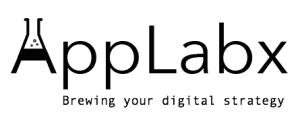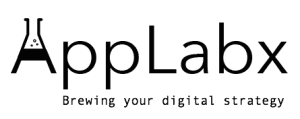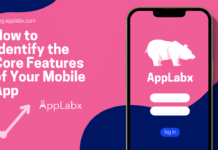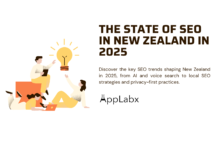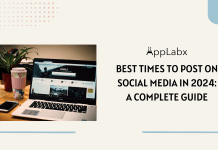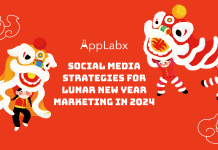Key Takeaways
- Email segmentation increases engagement by delivering personalized content tailored to specific audience groups, boosting conversions.
- Tracking key metrics like open rates, click-through rates, and conversion rates helps measure the success of segmentation efforts.
- Continuous testing and refinement of segments based on customer behavior and feedback lead to improved campaign performance and ROI.
In today’s highly competitive digital landscape, businesses are continuously seeking ways to improve their marketing efforts, increase customer engagement, and boost conversions.
One of the most powerful strategies to achieve these goals is through email marketing.
While sending out mass emails may seem like an effective way to reach a large audience, it often falls short in driving meaningful engagement.
This is where email segmentation comes into play. By targeting the right audience with the right message at the right time, email segmentation can significantly enhance the effectiveness of your campaigns and lead to higher conversion rates.

Email segmentation is the process of dividing your email list into distinct groups based on specific criteria, allowing you to tailor your messaging to suit the preferences, behaviors, and needs of each segment.
Rather than sending generic emails to everyone on your list, segmentation enables you to send personalized, relevant content that resonates with each individual recipient.
This not only helps improve the likelihood of your emails being opened and read but also increases the chances of your audience taking the desired action—whether it’s making a purchase, signing up for a webinar, or downloading an eBook.
The importance of email segmentation cannot be overstated.
In a world where inboxes are flooded with hundreds of emails daily, standing out and catching your audience’s attention has become more challenging than ever.
Generic emails that don’t speak directly to the recipient’s interests or needs are more likely to be ignored, marked as spam, or unsubscribed from. On the other hand, segmented emails, which deliver targeted and relevant content, have proven to generate higher engagement rates, stronger customer relationships, and, ultimately, better conversion rates.
Email segmentation is not a one-size-fits-all approach. It involves categorizing your audience based on various factors, such as demographics, behaviors, past interactions with your brand, geographic location, and even psychographic profiles.
With the right segmentation strategy, you can deliver personalized emails that speak to each group’s specific interests, problems, and aspirations.
For instance, sending a discount code to loyal customers who have made multiple purchases is more likely to result in a conversion than sending a generic promotion to your entire list.
Moreover, email segmentation empowers businesses to optimize their marketing efforts by focusing on the most promising leads. It allows marketers to send targeted messages that nurture prospects through the sales funnel, turning leads into paying customers.
By analyzing customer data and behavior, businesses can identify which segments are most likely to convert, making it easier to tailor offers, content, and incentives accordingly.
In this blog, we will explore the concept of email segmentation in-depth and uncover why it is crucial for driving higher conversions. We’ll discuss the different types of email segmentation, how to implement effective strategies, and the best practices that can help you maximize your results.
Additionally, we will provide real-life examples and case studies to illustrate how businesses can leverage segmentation to increase engagement and sales. Whether you’re new to email marketing or looking to optimize your existing campaigns, understanding the power of segmentation is key to unlocking higher conversion rates and achieving long-term success.
As we dive deeper into the topic, we’ll also touch on the importance of personalization in email campaigns. Personalization is a natural extension of email segmentation.
By customizing email content based on the recipient’s past behaviors, preferences, and interactions, you can create more meaningful experiences that resonate with your audience.
Research shows that personalized emails drive significantly higher open and click-through rates compared to generic emails, making them a crucial element in driving conversions.
In an era where customer expectations are at an all-time high, delivering a tailored email experience is no longer optional—it’s a necessity. As you continue reading, you will learn how to harness the power of email segmentation to craft targeted campaigns that convert.
Whether your goal is to increase sales, build brand loyalty, or engage your audience in a more meaningful way, segmentation is the key to achieving these objectives and ensuring the long-term success of your email marketing strategy.
But, before we venture further, we like to share who we are and what we do.
About AppLabx
From developing a solid marketing plan to creating compelling content, optimizing for search engines, leveraging social media, and utilizing paid advertising, AppLabx offers a comprehensive suite of digital marketing services designed to drive growth and profitability for your business.
AppLabx is well known for helping companies and startups use Email Marketing to drive web traffic to their websites and web apps.
At AppLabx, we understand that no two businesses are alike. That’s why we take a personalized approach to every project, working closely with our clients to understand their unique needs and goals, and developing customized strategies to help them achieve success.
If you need a digital consultation, then send in an inquiry here.
Email Segmentation: Targeting the Right Audience for Higher Conversions
- What is Email Segmentation?
- Why Email Segmentation is Crucial for Higher Conversions
- Key Types of Email Segmentation
- How to Implement Effective Email Segmentation
- Best Practices for Email Segmentation
- Measuring the Success of Email Segmentation
1. What is Email Segmentation?
Email segmentation is a marketing strategy that involves dividing an email list into smaller, more targeted groups based on specific criteria or characteristics. This allows businesses to send tailored, personalized messages that are more relevant to each recipient, leading to better engagement and higher conversion rates. Rather than sending generic emails to an entire subscriber list, email segmentation enables marketers to send messages that are customized to the interests, behaviors, and demographics of distinct segments of their audience.
By segmenting an email list, businesses can ensure that each subscriber receives content that resonates with them personally, increasing the likelihood of opening the email, interacting with the content, and taking the desired action—whether that’s making a purchase, clicking on a link, or signing up for a service. This targeted approach not only improves customer engagement but also drives better results for the business in terms of higher conversions and improved customer retention.
Key Aspects of Email Segmentation
- Audience Categorization
- Email segmentation involves dividing your audience into various categories based on specific criteria. Each segment represents a group of individuals with similar characteristics, behaviors, or preferences.
- Examples of segmentation categories include:
- Demographics: Age, gender, income, education level, etc.
- Behavioral data: Past purchases, browsing behavior, or interaction with previous email campaigns.
- Geographic location: Where subscribers are based, especially useful for local promotions or region-specific content.
- Psychographics: Lifestyle, interests, values, and motivations that influence purchasing behavior.
- Personalization
- Personalization is the core of email segmentation. It allows businesses to craft messages that speak directly to the recipient’s needs, desires, or pain points, making the communication more effective.
- For example, a clothing retailer may segment their list based on gender, sending product recommendations for men’s clothing to male subscribers and women’s clothing to female subscribers. This increases the relevance of the content, leading to a higher chance of conversions.
- Relevance and Timing
- Segmenting your email list ensures that recipients receive messages that are not only relevant but also timely. Timing plays a crucial role in email marketing. Segmented emails can be tailored to specific stages in the customer journey.
- Example: A customer who recently purchased a product might receive an email about complementary products or accessories, while someone who hasn’t engaged with your brand in a while might receive a re-engagement email with a special offer or incentive to return.
Benefits of Email Segmentation
- Improved Engagement
- Segmented emails are more likely to be opened and read because they offer content that is directly relevant to the recipient.
- Relevant subject lines, tailored offers, and personalized content result in higher open rates and click-through rates (CTR).
- Higher Conversion Rates
- By sending targeted messages that speak directly to a recipient’s preferences and behaviors, businesses increase the likelihood of turning a lead into a customer.
- Example: An eCommerce brand could send personalized discount offers to customers who have abandoned their shopping cart, prompting them to complete the purchase.
- Reduced Unsubscribes
- Sending irrelevant or generic emails can lead to unsubscribes, as customers may feel the content doesn’t match their needs. Segmentation reduces this risk by ensuring your messages are personalized and meaningful to each group.
- Example: A travel company could segment their email list based on past destinations traveled, ensuring subscribers only receive emails about vacation packages relevant to their interests.
- Better Customer Retention
- By sending personalized and relevant content to your audience, you strengthen your relationship with them, leading to improved customer loyalty and retention.
- Example: A SaaS company might segment their list based on how long a customer has been using the service, sending personalized tutorials or tips for new users and advanced features for long-term customers.
Types of Email Segmentation
- Demographic Segmentation
- What it is: Dividing your audience based on characteristics such as age, gender, income, education, job role, etc.
- Why it works: Demographics help predict what kind of products or services a customer might be interested in.
- Example: A beauty brand could segment their email list by gender, sending skincare tips and product recommendations to female subscribers and grooming products to male subscribers.
- Behavioral Segmentation
- What it is: Segmenting based on the actions a subscriber has taken, such as email opens, clicks, website visits, and purchase history.
- Why it works: Behavioral segmentation allows you to target users based on their specific actions, making the content more relevant.
- Example: An online store might send a follow-up email to customers who clicked on a product but didn’t purchase, offering them a discount or reminding them of the item.
- Geographic Segmentation
- What it is: Segmenting based on the location of your audience, whether that’s by country, state, region, or city.
- Why it works: Geographic segmentation helps brands send location-specific offers or promotions, as well as regional content that resonates with the local audience.
- Example: A restaurant chain might send promotions about new menu items or special discounts only to subscribers in the area where a new location has opened.
- Psychographic Segmentation
- What it is: Dividing your audience based on their attitudes, interests, values, and lifestyle choices.
- Why it works: Psychographics go beyond surface-level data, helping you understand the deeper motivations behind a subscriber’s purchasing decisions.
- Example: A fitness brand could segment their email list based on interests, sending workout gear recommendations to subscribers who have shown an interest in fitness, and wellness tips to those interested in mental health.
Examples of Effective Email Segmentation in Action
- E-commerce Website Example
- Scenario: An online clothing retailer uses segmentation to target customers based on purchase history.
- Segmentation Strategy:
- Customers who purchased winter jackets receive emails with new winter apparel and accessories.
- Customers who bought summer clothes get updates about new summer arrivals or limited-time sales on warm-weather gear.
- Result: Increased relevance of content leads to higher open rates and more purchases from targeted customers.
- SaaS Company Example
- Scenario: A software-as-a-service (SaaS) company segments its email list based on usage behavior.
- Segmentation Strategy:
- New users receive onboarding emails with tips on how to use the product.
- Long-term users are sent emails promoting advanced features, updates, or upgrades to higher-tier plans.
- Result: Better user engagement, reduced churn, and more upsell opportunities.
- Travel Agency Example
- Scenario: A travel agency segments its email list based on past travel destinations.
- Segmentation Strategy:
- Customers who previously booked trips to Europe receive promotions for new European tours.
- Those who booked beach vacations are targeted with offers for tropical getaways.
- Result: Increased interest in relevant travel packages, higher bookings, and improved customer satisfaction.
Conclusion
Email segmentation is a powerful tool that allows businesses to deliver highly targeted, relevant messages to their audience. By categorizing subscribers into distinct groups based on demographics, behaviors, location, and interests, businesses can create personalized email campaigns that speak directly to their customers’ needs. The result is better engagement, increased conversions, and long-term customer loyalty. Whether you are an eCommerce store, SaaS company, or service-based business, understanding and implementing email segmentation is crucial to optimizing your email marketing strategy.
2. Why Email Segmentation is Crucial for Higher Conversions
Email segmentation is one of the most effective strategies for increasing conversions in email marketing. By dividing your email list into smaller, targeted groups based on various factors such as demographics, behavior, purchase history, and preferences, you can send highly relevant, personalized content that resonates with each recipient. When you tailor your emails to meet the specific needs and interests of your audience, it greatly improves the chances of those recipients taking the desired actions, such as making a purchase, signing up for a service, or engaging with your content. Below, we explore why email segmentation is crucial for achieving higher conversions and the significant impact it can have on your overall marketing strategy.
1. Enhanced Personalization Drives Higher Engagement
- Personalized Emails Generate More Opens
- Segmented email lists allow you to send personalized content, which is more likely to grab the recipient’s attention.
- Emails that reflect a recipient’s past behavior or preferences make them feel valued, which increases the chances of them opening the email.
- Example: An online book retailer sends recommendations based on a customer’s previous purchases or browsing history. A personalized email that suggests new titles in a genre the customer loves is far more engaging than a generic, mass-email campaign.
- Higher Click-Through Rates (CTR)
- Emails with personalized content have significantly higher CTR compared to non-personalized emails. When the recipient finds the content relevant, they are more likely to click on links within the email.
- Example: A clothing retailer segments its audience by style preferences (e.g., casual wear, formal wear). Sending tailored offers, such as “10% off your next formal purchase” to those interested in formal wear, will generate a higher CTR than sending generic promotional content to the entire email list.
- Strong Emotional Connection
- Personalization fosters a sense of connection between the brand and the customer. By tailoring the messaging to individual preferences, customers are more likely to engage emotionally with your content, which is a powerful driver of conversions.
- Example: A subscription box service personalizes emails by addressing customers by name and recommending specific products or experiences based on their previous selections, creating a deeper connection and increasing the likelihood of repeat purchases.
2. Relevant Content Results in More Conversions
- Targeting with Timely Offers
- Email segmentation allows businesses to send highly relevant content at the right time in a customer’s journey. Whether a customer is a first-time visitor, a frequent buyer, or an inactive subscriber, segmentation ensures that the offer is tailored to their specific needs.
- Example: An eCommerce store might send a “Welcome Discount” email to new subscribers, a “Thank You for Your Purchase” email with cross-sell offers to recent buyers, and a “We Miss You” email with a special discount to inactive customers. This tailored approach increases the likelihood of a conversion in each segment.
- Reducing Message Clutter
- Segmented emails reduce the risk of overwhelming recipients with irrelevant offers or information. When recipients receive only the content that matters to them, they are more likely to act on it.
- Example: A travel agency may send exclusive vacation deals to customers who have previously expressed interest in beach destinations while sending mountain retreat offers to those who have browsed hiking trips.
- Targeting the Right Audience with the Right Message
- With segmentation, you can craft messages that speak directly to a particular audience’s preferences, making them more compelling and more likely to lead to conversions.
- Example: A software company might target high-value leads with a demo or free trial offer, while sending educational content or usage tips to existing users to increase their retention rate and encourage upgrades.
3. Improved Customer Retention Leads to Increased Lifetime Value
- Nurturing Customer Relationships
- By segmenting your email list, you can deliver more relevant content at each stage of the customer lifecycle. Nurturing leads and existing customers with targeted, valuable emails increases the likelihood of turning one-time customers into loyal, repeat buyers.
- Example: A fitness equipment brand could send targeted content to a customer who has purchased a treadmill, such as workout tips, maintenance guides, or special offers on complementary products (e.g., fitness apparel or accessories). This type of email creates an ongoing relationship that encourages future purchases.
- Loyalty and Repeat Purchases
- Sending relevant emails to repeat customers helps to deepen their loyalty and increases their lifetime value (LTV). By acknowledging their past purchases and providing them with offers that match their interests, you make it more likely they will purchase from you again.
- Example: A beauty brand might send a personalized email to a customer who bought a skincare product six months ago, offering a replenishment discount or new products in the same line. This segmentation encourages repeat purchases.
- Re-engagement Opportunities
- Segmentation can help identify customers who may have gone cold or become inactive. By crafting targeted emails designed to re-engage them, you can win them back and boost conversions.
- Example: A SaaS company could send a special offer to users who haven’t logged in for a while, such as a discount on their subscription or access to new features. This personalized approach can bring back dormant users and increase conversion rates.
4. Increased ROI Through Better Resource Allocation
- Optimized Marketing Spend
- When you segment your email list, you are targeting only those most likely to convert. This means you are optimizing your resources by focusing your efforts on those who are more inclined to respond to your campaigns, thereby improving your return on investment (ROI).
- Example: A luxury goods brand may focus their email marketing efforts on high-income subscribers who have previously shown interest in high-end products. This strategy ensures that marketing resources are being spent on a select group of individuals who are more likely to purchase, rather than sending out broad, costly campaigns to an uninterested audience.
- Increased Conversion Rates on Paid Campaigns
- When running paid email campaigns (e.g., through Facebook or Google Ads), segmentation helps you target the right groups based on data you have collected from past interactions. This increases the likelihood of your campaigns driving high-value conversions.
- Example: A software company may use segmentation to send specific offers to individuals who have visited their pricing page but didn’t sign up, offering a special discount to encourage them to take action.
5. Better A/B Testing and Campaign Optimization
- Effective A/B Testing
- Segmentation makes A/B testing more effective because it allows you to test variations within a specific segment of your audience. By segmenting your list, you can refine email content, subject lines, CTAs, and send times to determine what works best for each targeted group.
- Example: A retail brand may test two different subject lines—one offering a discount and one emphasizing limited-time availability—on a segment of their customer base. By segmenting, the brand can evaluate which subject line leads to higher open rates and conversions, allowing them to optimize future campaigns.
- Continuous Optimization for Higher Conversions
- Through segmentation, marketers can better understand which strategies work and which don’t, allowing them to continuously refine their tactics for improved performance over time.
- Example: An email campaign for a seasonal sale might be segmented by customer behavior: new visitors could receive introductory discounts, repeat buyers might get exclusive early access, and loyal customers could be offered VIP perks. By analyzing the results of each group’s performance, the business can refine its segmentation strategy and maximize conversions in future campaigns.
6. Stronger Brand Loyalty and Customer Trust
- Delivering Value with Every Email
- By sending relevant content to each segment, you show that you understand your audience’s needs. This builds trust with your subscribers and fosters a sense of loyalty to your brand, making them more likely to convert.
- Example: A pet supply store sends tailored emails to pet owners based on the type of pet they have. A dog owner receives information on dog food, accessories, and health tips, while a cat owner receives content suited to their needs. This targeted approach makes the emails more useful, building trust and encouraging future purchases.
- Enhanced Customer Experience
- Providing a personalized email experience helps create a positive customer experience, which can lead to long-term relationships and repeat business. A seamless experience that feels tailored to each customer increases their likelihood of conversion.
- Example: An online electronics retailer might send product updates and special offers on items that align with a customer’s previous purchases or browsing history, improving the overall shopping experience and increasing conversion chances.
Conclusion
Email segmentation is not just a strategy; it’s a crucial part of any successful email marketing campaign. It enables businesses to deliver relevant, personalized content that resonates with their audience, driving higher engagement, improving customer loyalty, and ultimately leading to increased conversions. By segmenting your email list, you can ensure that you are sending the right message to the right person at the right time, optimizing your resources and improving your ROI. Whether you’re looking to nurture leads, re-engage past customers, or increase sales, email segmentation is a proven method to help you achieve your conversion goals.
3. Key Types of Email Segmentation
Email segmentation is a strategic approach that involves dividing your subscriber list into smaller, more targeted groups based on specific characteristics, behaviors, or preferences. By understanding and utilizing various segmentation strategies, businesses can send highly personalized and relevant messages that significantly increase engagement, boost conversions, and strengthen customer relationships. Below are the key types of email segmentation, each of which plays a vital role in improving the effectiveness of your email marketing campaigns.
1. Demographic Segmentation
Demographic segmentation involves dividing your email list based on basic characteristics such as age, gender, income, education level, occupation, and family status. This type of segmentation is useful because it allows marketers to craft emails that appeal to the inherent interests and needs of different demographic groups.
- Why it works: Demographics are a strong predictor of consumer behavior. For example, people of different age groups may have distinct preferences, while income levels can influence purchasing power and interests.
- Types of demographic factors to consider:
- Age: Younger audiences may be interested in trendy products, while older customers may prioritize quality and longevity.
- Gender: Gender-specific product recommendations (e.g., men’s vs. women’s clothing, beauty products, or grooming items).
- Income: Tailoring promotions or product suggestions based on the customer’s purchasing power, e.g., luxury goods for high-income groups.
- Education and Occupation: Certain professions may require specialized products or services, such as office supplies or career-related tools.
- Family Status: Families may be interested in family-friendly offers, while single individuals might prefer exclusive products designed for their lifestyle.
- Example:
- A health and wellness company might segment its email list by gender, sending women specific health tips and products targeted to their needs (e.g., skincare or weight loss products) and sending men workout tips or supplements relevant to their fitness goals.
2. Behavioral Segmentation
Behavioral segmentation focuses on how subscribers engage with your brand, based on actions such as email opens, clicks, website visits, purchase history, and interactions with previous campaigns. This type of segmentation helps marketers understand consumer intent and tailor their messaging based on their engagement level and stage in the buyer’s journey.
- Why it works: Behavioral data provides valuable insights into customer interests and actions, enabling businesses to send relevant, action-oriented content. By responding to customers’ previous behaviors, businesses can nurture leads and turn them into conversions.
- Types of behavioral factors to consider:
- Email Engagement: Opens, clicks, and interaction rates.
- Browsing Behavior: Products viewed, time spent on certain pages, or specific categories explored on your website.
- Purchase History: Frequency of purchases, average order value, and product categories purchased.
- Cart Abandonment: Emails sent to users who added items to their cart but did not complete the purchase.
- Engagement Recency: Targeting inactive users with re-engagement campaigns or loyal customers with retention offers.
- Example:
- A travel agency can segment users who have recently shown interest in a specific destination and send them tailored offers for flights, hotels, and activities related to that location. Similarly, users who have abandoned a shopping cart might receive an email with a discount or a reminder to complete the purchase.
3. Geographic Segmentation
Geographic segmentation involves dividing your email list based on location-specific data such as country, region, state, city, or even postal codes. This is especially valuable for businesses offering location-based services, events, or promotions.
- Why it works: People in different geographical locations often have distinct needs, preferences, and behaviors. Geographic segmentation allows businesses to send relevant offers and information based on the recipient’s location.
- Types of geographic factors to consider:
- Country: Tailor offers and language to specific countries, especially if you have global audiences.
- Region/State/City: Regional offers, such as weather-specific promotions, local store events, or region-specific services.
- Local Events: Targeting users based on local events, product launches, or store openings.
- Example:
- A restaurant chain with multiple locations might send localized promotions to customers based on the city they reside in. For example, a restaurant in New York might offer a “Buy One, Get One Free” promotion, while a location in California might send a special offer for summer BBQ events.
4. Psychographic Segmentation
Psychographic segmentation divides your audience based on psychological attributes such as lifestyle, interests, values, personality traits, and social behaviors. This segmentation goes beyond demographics and looks at the deeper motivations behind a person’s purchasing decisions.
- Why it works: Understanding your audience’s values and interests helps create a stronger emotional connection and enables you to send content that resonates on a personal level, increasing the likelihood of conversion.
- Types of psychographic factors to consider:
- Interests and Hobbies: Catering to customers based on their activities or passions, such as sports, technology, or health.
- Values and Beliefs: For instance, eco-conscious consumers may appreciate emails about sustainable or eco-friendly products.
- Personality and Lifestyle: Identifying customer personalities—outgoing, adventurous, introverted, etc.—can influence the types of offers and messaging you use.
- Buying Motivations: Understanding whether customers buy for status, practicality, or self-care helps in crafting relevant product offers.
- Example:
- A clothing brand may segment its audience based on lifestyle choices. For example, sending activewear promotions to fitness enthusiasts, sustainable clothing offers to eco-conscious shoppers, and stylish office wear recommendations to professionals.
5. Engagement-Based Segmentation
Engagement-based segmentation focuses on how frequently a user interacts with your brand. It categorizes subscribers based on their activity level, whether they are new subscribers, active users, or disengaged customers.
- Why it works: Segmenting by engagement allows businesses to tailor messages for users at different stages of the customer lifecycle. Engaging inactive users with compelling re-engagement emails, while nurturing loyal users with exclusive offers, helps increase conversions and retention rates.
- Types of engagement factors to consider:
- Active Subscribers: Those who frequently open, click, and engage with your emails. They may respond well to loyalty offers, rewards, or exclusive content.
- Inactive Subscribers: Those who haven’t opened or interacted with emails for a while. They may benefit from re-engagement emails, special offers, or reminders about the brand.
- New Subscribers: Recent subscribers who have shown initial interest but may need nurturing through onboarding sequences, product education, or special promotions to become customers.
- Frequent Buyers: Subscribers who have made multiple purchases may appreciate loyalty rewards or product recommendations for complementary items.
- Example:
- A SaaS company might segment its email list to send different emails to new users (introducing them to product features), long-time active users (offering new product updates or cross-sells), and dormant users (re-engagement emails with discounts or reminders of key benefits).
6. Transaction-Based Segmentation
Transaction-based segmentation divides your email list based on a customer’s purchasing behavior. This method focuses on previous purchases, order history, or transaction frequency.
- Why it works: Customers who have made a purchase are more likely to buy again, and sending targeted follow-up emails, cross-sells, or upsells can help encourage additional transactions.
- Types of transaction factors to consider:
- Purchase Frequency: Customers who purchase frequently can be targeted with loyalty offers, special deals, or early access to new products.
- Average Order Value (AOV): Higher spenders may be interested in premium products or exclusive offers.
- Product Category: Customers who purchased in a specific category may be interested in similar or complementary products.
- Post-Purchase Behavior: Following up with customers after they’ve made a purchase to offer related products, reviews, or customer service information.
- Example:
- A cosmetics brand may send product recommendations based on previous purchases, such as suggesting a matching moisturizer to go with a customer’s previously purchased cleanser. Or, a retail clothing store could offer a discount on a new item based on what the customer has bought in the past.
7. Lifecycle-Based Segmentation
Lifecycle segmentation involves targeting customers based on where they are in the customer journey. This segmentation strategy focuses on different stages, such as awareness, consideration, and decision-making, and provides tailored messaging for each.
- Why it works: Different customer lifecycle stages require distinct messaging. For example, prospects need educational content to move them down the funnel, while existing customers may appreciate exclusive offers or product updates.
- Types of lifecycle stages to consider:
- New Subscribers: These users may need onboarding emails, educational content, or a welcome discount.
- Leads: Potential customers who are in the consideration phase, requiring more persuasive messaging, product demos, or testimonials.
- Existing Customers: These users might be sent product updates, loyalty offers, or cross-selling emails.
- Loyal Customers: Long-term customers who can be nurtured with VIP perks, anniversary offers, or advanced product recommendations.
- Example:
- A software company could send a welcome series to new users, an educational campaign to leads who are considering upgrading, and loyalty rewards or upsell offers to long-term users who are highly engaged with the product.
Conclusion
Email segmentation is a cornerstone of effective email marketing strategies. By categorizing your email list into relevant segments based on demographic, behavioral, geographic, psychographic, and engagement factors, you can deliver highly targeted, personalized messages that resonate with your audience. Each segmentation strategy has its unique benefits and applications, and when used in combination, they can significantly increase engagement and conversions. Whether you’re nurturing leads, re-engaging inactive customers, or promoting relevant offers, segmentation helps you connect with your audience on a deeper level, leading to stronger relationships and higher conversion rates.
4. How to Implement Effective Email Segmentation
Implementing effective email segmentation is crucial for driving higher engagement and improving conversion rates. By sending targeted, personalized messages to the right audience, businesses can deliver more value to their subscribers, leading to stronger relationships and increased sales. This section covers the essential steps to implement email segmentation effectively, along with practical examples and strategies to ensure your efforts are successful.
1. Define Your Segmentation Goals
Before diving into the segmentation process, it’s essential to define clear goals. Understanding what you aim to achieve with segmentation will help you identify the most relevant data points and criteria for creating your segments.
- Why it works: Having clear goals allows you to focus your segmentation efforts on the outcomes that matter most to your business, whether it’s increasing sales, improving customer retention, or enhancing email engagement.
- Steps to define goals:
- Increase Conversions: If your goal is to boost conversions, focus on segmenting based on purchase history, behavior, or lifecycle stage. For example, targeting cart abandoners with special discounts can drive higher conversions.
- Improve Customer Retention: For better retention, consider segmenting by engagement level or past purchases. Offering personalized follow-up emails and loyalty rewards can keep customers coming back.
- Boost Engagement: To increase open and click-through rates, segment by interests, demographics, or past email interactions. Tailoring content to specific interests ensures that recipients find the emails more relevant and engaging.
- Enhance Product Recommendations: Segmentation based on browsing behavior or past purchases can help deliver more accurate and relevant product suggestions, improving cross-sell and up-sell opportunities.
- Example:
A travel agency might set a goal to increase bookings for a specific destination by segmenting their email list based on users who have previously shown interest in that destination, providing tailored offers or itineraries.
2. Collect and Analyze Customer Data
Effective segmentation starts with gathering the right data. To implement email segmentation successfully, you need to collect relevant data about your subscribers to understand their behavior, preferences, and needs.
- Why it works: Customer data is the foundation for creating accurate segments. By gathering detailed data, you can build more targeted and effective segments that align with your goals.
- Types of data to collect:
- Demographic Information: Age, gender, location, job title, and income level can be used for demographic segmentation.
- Behavioral Data: Track how users interact with your emails, website, and social media. Actions such as email opens, clicks, time spent on site, and items added to cart can be used to create highly relevant behavioral segments.
- Purchase History: Knowing what products customers have purchased, how often they buy, and their average spend will help you create segments based on transaction history.
- Engagement Level: Segment based on how often users interact with your emails. For example, categorize your list into active, semi-active, and inactive users.
- Psychographics: Understand your customers’ interests, hobbies, values, and lifestyle choices by using surveys, questionnaires, or behavioral tracking.
- Example:
An eCommerce platform could analyze customer behavior and use this data to segment customers into “Frequent Buyers,” “Occasional Shoppers,” and “One-Time Purchasers,” tailoring email campaigns accordingly.
3. Choose the Right Segmentation Criteria
Once you have the data, the next step is to choose the right segmentation criteria. The key is to align your segments with the goals you defined earlier. You can create segments based on several factors, but it’s crucial to prioritize the ones that are most relevant to your specific objectives.
- Why it works: Choosing the right criteria ensures that the emails you send are highly relevant to each group. This increases the likelihood of engagement and conversion.
- Popular segmentation criteria:
- Demographics: Segment by characteristics such as age, gender, income, or education. This is particularly useful for targeting products or services that are more suited to certain groups.
- Behavior: Segment by past behavior, such as purchase history, website activity, or specific email interactions. This helps you tailor your messaging based on what the customer has shown interest in.
- Location: Use geographic data to send location-specific offers, promotions, or events. This is especially useful for businesses with physical stores or local events.
- Engagement: Categorize customers based on how frequently they engage with your emails. Send tailored content to dormant users to re-engage them, and provide exclusive offers to loyal users.
- Lifecycle: Segment by where customers are in the buyer’s journey (e.g., leads, first-time customers, repeat customers). This ensures that you are sending content appropriate for each stage of the relationship.
- Example:
A fashion retailer may segment its audience based on browsing behavior (e.g., people who have shown interest in a specific category like “Summer Dresses”) and send targeted emails with product recommendations based on this interest.
4. Create and Test Your Email Campaigns
Once you’ve defined your segments, it’s time to create tailored email campaigns for each group. The content of the email should align with the needs, interests, and behaviors of each segment.
- Why it works: Tailoring your messaging ensures higher engagement, more relevant content, and a greater chance of converting your subscribers into customers.
- Steps for creating effective email campaigns:
- Craft Compelling Subject Lines: Personalize subject lines for each segment. For example, a subject line like “Your Next Adventure Awaits: 15% Off Your Dream Vacation” will appeal to someone who’s shown interest in travel destinations.
- Personalize Content: Use dynamic content blocks to display products, offers, or images that match each segment’s preferences or previous interactions with your brand.
- Include Clear CTAs: Make your calls-to-action (CTAs) highly relevant to the segment. For example, a segment of first-time visitors might see a “Learn More” CTA, while a segment of repeat customers could receive a “Shop Now” CTA with a discount code.
- Test Variations: A/B testing is crucial to determine what works best for each segment. Test different subject lines, email layouts, CTAs, and images to see which combination leads to higher engagement and conversions.
- Example:
A SaaS company might send a personalized email offering a free trial to new sign-ups, while existing customers receive an email promoting advanced features and tips for maximizing the value of the product.
5. Use Marketing Automation Tools
Implementing email segmentation can be time-consuming, especially as your list grows. Marketing automation tools help streamline the segmentation process, making it easier to send targeted, timely messages to the right segments at scale.
- Why it works: Marketing automation allows you to trigger emails based on certain actions or behaviors, ensuring that subscribers receive the most relevant content at the right time.
- Popular marketing automation platforms:
- Mailchimp: Offers robust segmentation features, allowing you to segment your email list based on demographics, engagement, purchase history, and more. It also supports A/B testing and automated email sequences.
- HubSpot: Known for its advanced segmentation and automation features, HubSpot allows users to create workflows that automatically send emails to targeted segments based on their behavior and engagement.
- ActiveCampaign: Specializes in behavioral automation, allowing you to create highly personalized email campaigns based on customer behavior, purchase history, and engagement level.
- Example:
A fashion retailer could set up an automation that sends a follow-up email with a discount code to customers who abandoned their cart, automatically targeting only the users who have added items to their shopping cart but haven’t completed the purchase.
6. Monitor Performance and Optimize
After implementing your email segmentation campaigns, it’s important to track performance and optimize your strategies. By analyzing key metrics, you can identify areas for improvement and refine your segmentation efforts over time.
- Why it works: Continuous monitoring and optimization help you identify which segments respond best to your campaigns and enable you to improve the effectiveness of future campaigns.
- Key metrics to track:
- Open Rate: A high open rate suggests your subject lines and segment targeting are effective.
- Click-Through Rate (CTR): This measures how many people click on links within your emails, showing how relevant and compelling the content is for each segment.
- Conversion Rate: Tracks how many recipients took the desired action, such as making a purchase, signing up for a service, or downloading an ebook.
- Bounce Rate: A high bounce rate may indicate issues with list hygiene or targeting, especially if emails are being sent to inactive or invalid addresses.
- Unsubscribe Rate: Monitor unsubscribes closely to determine if your emails are too frequent, irrelevant, or poorly executed.
- Example:
After running a holiday campaign segmented by past purchase behavior, an eCommerce store could analyze which segments showed the highest conversion rates and then adjust its segmentation for future holiday promotions to focus on the most responsive groups.
Conclusion
Implementing effective email segmentation requires a strategic approach, from defining clear goals to gathering and analyzing data, choosing segmentation criteria, and crafting tailored campaigns. By using marketing automation tools and constantly optimizing your campaigns, you can ensure your email marketing efforts are as effective as possible. By sending highly relevant and personalized emails to the right segments, businesses can see higher engagement, better conversions, and stronger customer relationships. Email segmentation is not a one-time effort but an ongoing strategy that can drive sustained success in your email marketing campaigns.
5. Best Practices for Email Segmentation
Email segmentation is one of the most powerful strategies for improving engagement, conversions, and overall email marketing success. To maximize the effectiveness of your email campaigns, it’s essential to follow best practices that ensure your segmentation efforts are not only accurate but also aligned with your business objectives. This section provides a comprehensive guide to the best practices for email segmentation, offering insights, tips, and relevant examples to help you implement segmentation that drives results.
1. Segment Based on Clear Business Objectives
Effective email segmentation starts with having well-defined business goals. The segmentation strategy you implement should be directly tied to your overall marketing objectives, whether that’s increasing sales, boosting engagement, or improving customer retention.
- Why it works: By aligning your segments with business objectives, you ensure that your campaigns target the right audience and deliver value, increasing the chances of achieving your desired outcomes.
- Best practices for setting objectives:
- Increase Conversion Rates: Focus on segmenting based on behavioral data, such as purchase history, product interest, or cart abandonment. For example, sending abandoned cart emails with a personalized incentive can help increase conversions.
- Enhance Customer Retention: For retention, target customers who have made purchases in the past but have not interacted recently. Tailor messages that emphasize new arrivals, loyalty rewards, or special offers for returning customers.
- Boost Engagement: To improve open rates and clicks, segment based on email engagement metrics. For example, target inactive subscribers with a re-engagement campaign that offers a compelling incentive to return.
- Example:
A subscription-based service might set a goal to increase subscriber retention. By segmenting users based on how frequently they interact with their emails, they can send targeted campaigns that encourage inactive users to re-engage and highlight the value of the service.
2. Use Data-Driven Segmentation
The success of email segmentation largely depends on the quality and accuracy of the data you use. The more comprehensive and up-to-date your customer data is, the more effective your segmentation efforts will be. Leverage available data to create meaningful and targeted segments.
- Why it works: Data-driven segmentation allows you to group your audience based on specific behaviors, demographics, or interests, ensuring that your messages are relevant and personalized. This leads to better engagement and higher conversion rates.
- Data points to consider:
- Demographics: Collect information such as age, gender, location, and income level. For instance, an online clothing retailer might segment based on gender to send women-specific fashion offers or discounts.
- Behavioral Data: Track website activity, email opens, clicks, and purchases. Behavioral segmentation allows you to send more personalized messages based on actions, such as offering product recommendations based on past browsing behavior.
- Lifecycle Stage: Segment based on where customers are in their journey. For example, new subscribers may receive welcome emails, while repeat customers could receive loyalty program invitations.
- Purchase History: Segment customers based on their past purchases to send tailored offers for complementary or related products. For instance, a customer who bought a camera might receive emails about camera accessories.
- Example:
An eCommerce store might use purchase history and browsing behavior to segment their audience into those interested in “electronics” versus those interested in “home goods,” sending targeted emails featuring the most relevant products to each group.
3. Leverage Advanced Segmentation Tools
To efficiently handle complex segmentation, it’s beneficial to utilize advanced email marketing tools and automation platforms. These tools can help you manage your data, automate the segmentation process, and send personalized emails at scale.
- Why it works: Marketing automation tools make segmentation more manageable, reducing manual effort and ensuring timely, consistent messaging that reaches the right people at the right moment.
- Recommended tools for segmentation:
- Mailchimp: Allows you to segment based on demographics, behavior, purchase history, and engagement. It also includes automation workflows to send personalized emails at scale.
- HubSpot: HubSpot provides advanced segmentation features with robust reporting tools, allowing you to create dynamic segments based on specific customer actions and lifecycle stages.
- Klaviyo: Especially useful for eCommerce businesses, Klaviyo offers advanced segmentation based on customer behavior, purchase frequency, and engagement, helping businesses send highly targeted email campaigns.
- ActiveCampaign: Known for its automation and segmentation features, ActiveCampaign allows marketers to send personalized messages based on detailed data points, including behavioral triggers and lifecycle status.
- Example:
A retailer using Klaviyo can set up a workflow that automatically triggers personalized emails to customers who have abandoned their carts, sending reminders or special offers based on the items left in their cart.
4. Personalize Your Emails for Each Segment
Personalization goes beyond simply adding the recipient’s name in the subject line. For effective segmentation, ensure that each email is tailored not just to the segment but to the individual within that segment. The more personalized and relevant the email, the higher the likelihood of engagement.
- Why it works: Personalization builds trust and demonstrates to the recipient that you understand their needs and preferences. This increases the chances of the recipient engaging with the content and taking action.
- Best practices for personalizing emails:
- Dynamic Content: Use dynamic content blocks to show different offers, images, or products depending on the segment. For instance, a customer who has shown interest in tech products should receive emails featuring the latest gadgets, while someone who frequently shops for home décor might see emails highlighting new furniture collections.
- Tailored Subject Lines: Customize the subject lines for each segment to make them more appealing. For example, a “Special Offer Just for You” subject line could be more enticing than a generic offer for a sale.
- Product Recommendations: Use purchase history or browsing behavior to suggest products the recipient is likely to be interested in. For example, a customer who recently purchased a laptop might appreciate an email recommending accessories like a laptop case or mouse.
- Example:
A beauty brand could use dynamic content to send a customer who purchased a facial cleanser an email featuring complementary skincare products, such as moisturizers or serums, based on their previous interests.
5. Test and Optimize Your Segments
Segmentation is not a one-size-fits-all solution. Over time, you’ll need to experiment with different segmentation strategies to find what works best for your audience. A/B testing and continuous optimization are key to improving the effectiveness of your email campaigns.
- Why it works: Regular testing allows you to refine your segments, understand which combinations of factors lead to the best results, and improve overall campaign performance.
- Best practices for testing and optimization:
- A/B Test Email Content: Test different email subject lines, calls to action (CTAs), and images to see which combinations resonate most with each segment. For example, you could test whether offering a discount vs. emphasizing product benefits results in higher conversions.
- Track Key Metrics: Monitor open rates, click-through rates, conversion rates, and bounce rates for each segment to assess performance. Use this data to make adjustments, such as refining segments or optimizing email content.
- Analyze Customer Feedback: Collect feedback from your subscribers through surveys or direct responses to understand their preferences better. This data can help refine segmentation criteria and messaging.
- Example:
An online retailer could run A/B tests on an email campaign targeting first-time buyers. One version of the email might emphasize product features, while another might highlight the benefits of loyalty programs. Testing will help identify which approach leads to more conversions.
6. Maintain a Clean and Up-to-Date Email List
One of the most important best practices for email segmentation is ensuring that your email list is clean and current. Regularly cleaning your list ensures that you are only sending emails to engaged, relevant subscribers, which in turn improves deliverability rates and reduces bounce rates.
- Why it works: A clean list ensures that your emails reach the right people and that you avoid wasting resources on disengaged or invalid email addresses. This improves your sender reputation and helps maintain high engagement.
- Best practices for list management:
- Remove Inactive Subscribers: Periodically remove or re-engage inactive subscribers to maintain a high-quality list. For example, you could target inactive users with a re-engagement campaign before removing them.
- Segment Unsubscribers: If users unsubscribe from a particular type of email or campaign, segment them and stop sending irrelevant content. This helps prevent complaints and protects your sender reputation.
- Validate Email Addresses: Use tools to check for invalid or mistyped email addresses to reduce bounce rates and ensure your emails are reaching their intended recipients.
- Example:
An eCommerce brand might segment its email list by engagement levels and run a campaign offering a discount to customers who haven’t opened an email in the past three months, aiming to re-engage them before eventually removing them if they remain unresponsive.
7. Respect Privacy and Be Transparent
As you collect more data on your subscribers, it’s critical to respect their privacy and follow best practices for data handling. Always ensure compliance with privacy laws such as GDPR, CAN-SPAM, and CCPA, and be transparent about how you’re using customer data.
- Why it works: Building trust with your subscribers is essential for long-term success in email marketing. By being transparent and respectful of privacy, you foster positive relationships that can lead to better engagement and loyalty.
- Best practices for privacy and transparency:
- Obtain Explicit Consent: Ensure that subscribers have opted into receiving your emails. This reduces the risk of spam complaints and ensures you are legally compliant.
- Allow Easy Opt-Out: Make it easy for users to unsubscribe if they no longer want to receive emails. Always include a visible unsubscribe link in every email.
- Clearly Communicate Data Usage: Be transparent about what data you collect and how it will be used. Include a privacy policy and ensure that subscribers can easily access and review it.
- Example:
A fashion retailer could include a brief note in their welcome email explaining how they collect customer preferences to send tailored offers, and how subscribers can update their preferences or opt-out at any time.
Conclusion
By following these best practices, you can implement email segmentation strategies that improve engagement, drive conversions, and build lasting customer relationships. Segmenting your audience based on clear goals, using accurate data, personalizing content, and regularly testing and optimizing your campaigns are key elements for success. Whether you’re looking to boost sales, improve customer retention, or enhance email engagement, effective segmentation ensures that your emails are relevant, timely, and impactful, ultimately contributing to the overall success of your email marketing efforts.
6. Measuring the Success of Email Segmentation
Measuring the success of email segmentation is crucial to determine whether your segmentation strategy is effective and driving the desired results. Proper analysis helps identify areas for improvement, fine-tune your approach, and maximize the impact of your email campaigns. By tracking the right key performance indicators (KPIs) and using relevant metrics, you can ensure your email segmentation efforts align with your business goals and deliver optimal performance. This section discusses how to measure the success of email segmentation, the key metrics to monitor, and actionable tips for improvement.
1. Identify Key Performance Indicators (KPIs)
To assess the effectiveness of your email segmentation strategy, it is essential to define the right KPIs. These KPIs will help you track the performance of your campaigns and determine if the segmented approach is achieving the desired outcomes.
- Why it works: KPIs provide measurable data that lets you track progress toward your goals and understand what works well and what doesn’t. With this information, you can adjust your strategy to enhance performance.
- Common KPIs to measure success:
- Open Rate: The percentage of recipients who open your email. A higher open rate typically indicates that your subject lines and segmentation are appealing to your audience.
- Click-Through Rate (CTR): The percentage of recipients who click on a link or call to action within your email. A higher CTR indicates that your content is relevant and engaging for the targeted segment.
- Conversion Rate: The percentage of recipients who take the desired action (e.g., making a purchase, filling out a form, downloading a resource). This is a direct measure of how effective your email is at driving your desired outcomes.
- Bounce Rate: The percentage of emails that were not successfully delivered. A high bounce rate may indicate problems with list quality or email deliverability, which can negatively affect segmentation efforts.
- Unsubscribe Rate: The percentage of recipients who unsubscribe from your email list after receiving an email. A high unsubscribe rate may suggest that your emails are irrelevant or too frequent for certain segments.
- Revenue per Email: The average amount of revenue generated for each email sent. This metric is especially important for eCommerce businesses to assess the direct financial impact of segmentation efforts.
- List Growth Rate: The rate at which your email list grows over a specified period. A positive list growth rate, especially when combined with segmentation, signals that your emails are resonating with the right audience and driving sign-ups.
- Example:
An online retailer might focus on the conversion rate as a KPI for a holiday promotion, measuring how many email recipients from a specific segment (e.g., previous holiday shoppers) convert into paying customers.
2. Track Engagement Metrics
Engagement metrics are crucial for understanding how recipients interact with your emails, which directly reflects the success of your segmentation efforts. Higher engagement typically indicates that your segmented emails are resonating with the audience and that the content is relevant and compelling.
- Why it works: Engagement metrics like open rates, click-through rates, and time spent on email are indicators of how well the content is connecting with each segmented audience. High engagement suggests that your segmentation is successful in delivering personalized, targeted content.
- Important engagement metrics to monitor:
- Open Rate: Track how often recipients open your emails, particularly for different segments. A high open rate often indicates that your subject lines are tailored to each segment and that your segmentation strategy is effectively targeting the right audience.
- Click-Through Rate (CTR): Measure how often recipients click on links within your emails. This metric shows the relevance of the email content to the specific interests and behavior of the segmented audience.
- Time Spent on Email: Track how much time recipients spend reading or interacting with the content within your email. Longer engagement times generally signal that your emails are compelling, useful, and highly relevant to the segment.
- Heatmaps and Link Clicks: Use heatmaps to visualize where recipients are clicking within your email. By analyzing this, you can determine which areas of the email are most engaging to each segment and refine future campaigns accordingly.
- Example:
A B2B software company may track CTR for their product update emails across segments such as new leads, trial users, and existing customers to determine which segment shows the most interest and engagement with the update.
3. Monitor Conversion and Sales Metrics
The ultimate goal of email marketing, especially when segmented, is to drive conversions—whether that’s making a purchase, signing up for a service, or completing another desired action. Monitoring sales and conversion metrics helps you understand whether your segmentation strategy is generating tangible business results.
- Why it works: Conversion rates give a clear indication of the effectiveness of your email campaigns. If your segmentation leads to higher conversion rates, it shows that the emails are relevant, personalized, and well-targeted for each audience segment.
- Key conversion metrics to track:
- Conversion Rate: Measure the percentage of email recipients who complete a desired action, such as purchasing a product or signing up for an event. A higher conversion rate suggests that the segment received an offer or content they find valuable.
- Revenue per Email: Track the average revenue generated from each email sent. This metric helps measure the financial impact of your segmented campaigns.
- Return on Investment (ROI): Measure the return on investment for each segmented email campaign by calculating the cost of the campaign versus the revenue generated. A higher ROI indicates that your segmentation strategy is driving profitable results.
- Cart Abandonment Recovery: For eCommerce businesses, monitor how many abandoned cart recovery emails result in completed purchases. Segments based on past cart activity are often highly effective at recovering abandoned carts.
- Example:
An eCommerce company may segment its list based on browsing behavior and offer a discount to customers who added items to their cart but didn’t complete a purchase. Tracking the conversion rate for this segment helps measure how effectively these emails drive purchases.
4. A/B Test Your Segments and Campaigns
A/B testing is a critical tool for optimizing email segmentation. By testing different variables within your segments, such as subject lines, content, offers, and CTAs, you can determine which combinations produce the best results.
- Why it works: A/B testing enables you to test multiple approaches within each segment to identify which strategies resonate best with each group. It also allows you to fine-tune your segmentation by testing how different segments respond to different messaging.
- Best practices for A/B testing in email segmentation:
- Test Subject Lines: Experiment with different subject lines for each segment to see which ones lead to higher open rates. For example, try testing a sense of urgency (“Last chance to save!”) versus a value proposition (“Save 20% on your next purchase”).
- Test CTAs: Test different CTAs to determine which one drives more clicks for a specific segment. For instance, “Shop Now” versus “View Products” might have different results depending on the segment’s interest level.
- Test Email Content: A/B test variations in email content, such as images, text length, or product recommendations. Determine what type of content is most appealing to each segment and fine-tune your future emails accordingly.
- Test Send Times: Test the best times to send emails to different segments. Some audiences may respond better to emails sent in the morning, while others might engage more with afternoon or evening sends.
- Example:
An online clothing retailer might A/B test subject lines for a seasonal sale email sent to a segment of past buyers. One version might emphasize “Limited-time offer” while the other emphasizes “Exclusive deals for loyal customers,” to see which phrasing leads to higher engagement.
5. Evaluate Customer Lifetime Value (CLV)
Customer Lifetime Value (CLV) is a long-term metric that measures the total value a customer brings to your business throughout their entire relationship with your brand. By measuring CLV, you can understand how effectively your segmentation efforts are fostering loyalty and driving recurring purchases.
- Why it works: CLV helps you evaluate the long-term success of your email segmentation efforts. A high CLV indicates that your segmentation strategy is effectively nurturing customer relationships, leading to repeat purchases and sustained revenue over time.
- How to calculate CLV:
- Calculate the average purchase value, the frequency of purchases, and the average customer lifespan. Use these metrics to estimate the overall revenue each segment generates over time.
- Compare CLV across different segments to determine which groups provide the highest long-term value. For example, if a segment of first-time buyers has a higher CLV than a segment of one-time purchasers, it suggests that segmentation based on purchase history or behavior is a good strategy for fostering loyalty.
- Example:
A subscription box service may calculate CLV by analyzing how long subscribers stay subscribed and the total value of their subscription purchases. They might find that customers who were segmented based on past product preferences have a higher CLV, leading to more targeted renewal offers.
6. Monitor Subscriber Behavior and Preferences
Tracking subscriber behavior and preferences over time is crucial for evaluating the effectiveness of your segmentation. By continuously monitoring how segments interact with your emails, you can adjust your strategy to align with changing customer needs and preferences.
- Why it works: Understanding how customer preferences evolve allows you to fine-tune your segmentation to ensure it remains relevant and effective. As customer behavior shifts, so should your segmentation approach.
- Metrics to track subscriber behavior:
- Email Open Rates by Segment: Track how often different segments open your emails. A drop in open rates for a specific segment may suggest that your content or offers are no longer as appealing and require adjustment.
- Clicks on Specific Content: Monitor which types of content within your emails receive the most clicks (e.g., product recommendations, blog posts, or promotions). This can help you understand what types of content resonate most with each segment.
- Preference Changes: Allow subscribers to update their preferences (e.g., product interests, frequency of emails). Track these changes to adjust segmentation accordingly, ensuring that your emails remain aligned with customer needs.
- Example:
A music streaming service could track which genres users click on most in their emails, using this data to further personalize future music recommendations for each segment.
7. Refine Your Segmentation Strategy
Finally, continuous refinement is key to long-term success. Use the data you gather from your metrics to refine your segmentation strategy. Over time, you will gain insights into which segments are the most profitable and which methods produce the best results.
- Why it works: Regular optimization ensures that your segmentation strategy stays fresh, relevant, and aligned with your business objectives. Over time, as customer behavior and preferences evolve, adapting your segmentation efforts will help sustain high engagement and conversions.
- Best practices for refining segmentation:
- Review and update segments regularly: Periodically assess and update your segments to ensure they are still relevant. For instance, adjust segments based on seasonal behavior or changing customer preferences.
- Identify underperforming segments: Use performance data to identify underperforming segments and optimize your approach. For example, if a segment is consistently underperforming, consider revising the messaging, frequency, or offers you’re sending to that group.
- Example:
A travel agency might analyze seasonal behavior and adjust their segments to send more relevant offers, such as promoting summer vacation destinations to customers who typically book trips during this period.
Conclusion
Measuring the success of email segmentation is critical for ensuring that your segmentation efforts are delivering the results you want. By tracking key metrics like open rates, click-through rates, conversion rates, and customer lifetime value, you can gain valuable insights into how your segments are performing. Monitoring engagement, conversion, and sales metrics, running A/B tests, and continuously refining your strategy will help you optimize your campaigns for better results. Ultimately, by consistently evaluating and adjusting your segmentation approach, you can maximize the effectiveness of your email marketing campaigns and drive higher conversions and customer satisfaction.
Conclusion
In the ever-evolving world of digital marketing, email remains one of the most powerful and effective tools to drive conversions. However, to truly unlock the potential of email marketing, it’s no longer enough to send generic, one-size-fits-all messages to your entire subscriber list. The key to achieving higher conversions and improved campaign performance lies in a well-executed email segmentation strategy. By carefully segmenting your audience and tailoring your messages to meet the specific needs, interests, and behaviors of each group, you can drastically increase engagement, build stronger relationships, and, ultimately, drive more conversions.
Email segmentation allows you to move away from mass marketing and adopt a more personalized approach. It enables you to send targeted content that resonates with each group of recipients, which in turn, leads to better outcomes across a range of key metrics, including open rates, click-through rates, and conversion rates. When you cater to the unique preferences and behaviors of your audience, you’re more likely to grab their attention, provide value, and motivate them to take the desired actions, whether that’s making a purchase, signing up for an event, or filling out a form.
The Power of Personalization in Boosting Conversions
The importance of personalization cannot be overstated. Segmentation is the foundation upon which personalization thrives. By segmenting your email list based on factors such as demographics, location, purchase history, browsing behavior, and engagement levels, you are able to deliver highly relevant content that speaks directly to the interests and needs of each recipient. Personalized emails are far more likely to capture attention, spark interest, and prompt action than generic emails that don’t consider the recipient’s preferences.
For example, if you are an eCommerce brand, sending tailored product recommendations based on past purchases or browsing behavior will have a far greater impact than sending a generic promotional email to your entire list. This level of personalization makes your emails feel more relevant and valuable, increasing the likelihood that recipients will engage with your content and follow through with the desired action. Whether it’s a discount, an exclusive offer, or a time-sensitive call to action, segmentation allows you to deliver the right message at the right time, driving higher conversion rates.
More Accurate Targeting Leads to Higher ROI
One of the primary benefits of email segmentation is the ability to more accurately target specific audience groups with highly relevant messaging. When you segment your email list, you can craft content that speaks to the unique needs of each group, ensuring that your campaigns are more relevant and timely. This increases the chances that recipients will engage with your emails and take the desired action, ultimately leading to higher conversion rates and, by extension, a better return on investment (ROI).
For example, a subscription-based business might segment its customers into groups based on their subscription plans or their usage frequency. By tailoring the messaging for each group—whether it’s an offer to upgrade to a higher-tier plan or a reminder to use their existing subscription more effectively—the business can ensure its emails are directly aligned with each segment’s needs, driving more conversions and optimizing revenue.
Moreover, when you send more relevant emails to specific segments, you reduce the risk of unsubscribes and spam complaints. Sending irrelevant content to the wrong audience can damage your sender reputation and lower your deliverability rates, negatively affecting the overall success of your email campaigns. Segmentation helps you avoid these pitfalls by ensuring that your emails are relevant to the recipient, improving both engagement and deliverability, which ultimately leads to a higher ROI.
Continuously Optimizing Your Segmentation Strategy
The beauty of email segmentation is that it’s not a static process. As your audience grows and their preferences evolve, so too should your segmentation strategy. Continually analyzing the performance of your segmented email campaigns allows you to make data-driven decisions, refine your segments, and optimize your content to achieve even better results over time.
It’s essential to track key performance metrics such as open rates, click-through rates, conversion rates, and subscriber behavior to understand how your segments are performing. A/B testing different subject lines, content types, offers, and sending times can also help you fine-tune your segmentation strategy and discover the most effective approaches for each group. By testing and iterating, you can ensure that your email campaigns are always optimized for maximum engagement and conversions.
Another key aspect of refining your segmentation strategy is to actively gather feedback from your subscribers. Allowing them to update their preferences and interests helps ensure that you’re sending the most relevant content to each segment. Additionally, paying attention to customer behavior patterns—such as how often they engage with your emails, their click behavior, and their responses to offers—will help you continuously refine your audience segments and tailor your messaging accordingly.
A Holistic Approach to Email Marketing Success
While email segmentation is undoubtedly a powerful strategy for increasing conversions, it works best when integrated into a broader, well-rounded email marketing plan. This includes creating compelling, high-quality content, optimizing subject lines for higher open rates, designing visually appealing emails, and ensuring that your CTAs are clear and persuasive. Segmentation serves as the foundation of this broader strategy, ensuring that the right content reaches the right people at the right time.
It’s also important to maintain a balance between automation and personalization. Email automation tools allow you to send timely and relevant messages to segmented lists, whether that’s a welcome email for new subscribers or a cart abandonment reminder for those who haven’t completed their purchase. However, over-reliance on automation without enough attention to personalized content can make your emails feel robotic and impersonal. Striking the right balance between automation and customization is key to maintaining an authentic connection with your subscribers, which is crucial for long-term engagement and loyalty.
The Future of Email Segmentation
As email marketing continues to evolve, so will the tools and techniques available for segmentation. Artificial intelligence (AI) and machine learning are already beginning to play a significant role in helping marketers segment audiences more effectively. These technologies allow for advanced behavioral segmentation based on user activity, allowing for hyper-personalized emails that are tailored to each individual’s specific actions and preferences.
In the future, we can expect even more granular segmentation options, allowing brands to target their audiences with even greater precision. With the rise of AI-powered predictive analytics, marketers will be able to anticipate customer behavior, predict future purchases, and send emails that are even more tailored and timely. This will further drive higher conversion rates and create deeper connections with customers.
Final Thoughts
In conclusion, email segmentation is a fundamental strategy for any business looking to drive higher conversions and achieve better results from their email marketing efforts. By dividing your audience into specific groups based on their behaviors, demographics, and preferences, you can send more relevant, personalized messages that resonate with each recipient. This, in turn, leads to increased engagement, reduced unsubscribes, and ultimately, higher conversion rates.
As you implement and refine your email segmentation strategy, remember to track key metrics, test different approaches, and continually optimize your campaigns. With a data-driven approach and a focus on personalization, you can ensure that your email marketing efforts are always aligned with your business objectives and delivering maximum ROI. By targeting the right audience with the right message, you can achieve sustained growth, build stronger customer relationships, and unlock the full potential of email marketing.
If you are looking for a top-class digital marketer, then book a free consultation slot here.
If you find this article useful, why not share it with your friends and business partners, and also leave a nice comment below?
We, at the AppLabx Research Team, strive to bring the latest and most meaningful data, guides, and statistics to your doorstep.
To get access to top-quality guides, click over to the AppLabx Blog.
People also ask
What is email segmentation?
Email segmentation is the process of dividing your email list into smaller, targeted groups based on specific criteria like demographics, behavior, or preferences to send more relevant and personalized content.
Why is email segmentation important?
Segmentation allows you to tailor your email content to specific groups, improving engagement, reducing unsubscribe rates, and ultimately increasing conversion rates by delivering the right message to the right people at the right time.
How does email segmentation improve conversions?
By sending targeted, personalized emails to the right audience, segmentation increases relevance, which boosts open rates, click-through rates, and overall conversions. It makes your emails feel more valuable and engaging to recipients.
What are the key types of email segmentation?
The main types include demographic segmentation, behavioral segmentation, geographic segmentation, psychographic segmentation, and lifecycle stage segmentation. Each method allows you to tailor your message based on different criteria.
How do you segment email lists?
To segment email lists, use data like customer preferences, past behaviors, location, and demographic details. Email marketing platforms offer tools to automate the segmentation process based on this data.
Can email segmentation be automated?
Yes, email segmentation can be automated using marketing platforms that track user behavior, preferences, and demographic data to automatically categorize subscribers and send relevant content based on their profile.
What are the benefits of email segmentation?
Benefits include higher engagement rates, more relevant content for subscribers, reduced unsubscribes, better customer relationships, and increased conversions. Segmentation helps improve email marketing ROI.
How often should you update email segments?
Email segments should be reviewed and updated regularly, ideally every few months, to ensure they stay relevant based on changes in customer behavior, preferences, or seasonal factors.
What are some common mistakes in email segmentation?
Common mistakes include segmenting too broadly, neglecting to clean up your email list, relying too heavily on one criterion, or failing to test different segments to find the most effective strategy.
How do you personalize emails for better segmentation?
Personalize emails by using data such as the recipient’s name, purchase history, browsing activity, or preferences to create tailored content. This increases engagement and helps make the email more relevant to the individual.
What metrics should be tracked for segmented email campaigns?
Key metrics include open rates, click-through rates, conversion rates, bounce rates, and unsubscribe rates. These help measure how well your segmentation strategy is performing and identify areas for improvement.
How does segmentation impact email open rates?
Segmentation improves open rates by sending more targeted content to recipients, which is more likely to grab their attention and lead them to open the email, rather than sending generic messages to the entire list.
Is email segmentation suitable for small businesses?
Yes, email segmentation is beneficial for small businesses as it allows them to deliver more personalized content, which improves customer relationships and increases conversion rates without requiring large-scale resources.
What are the best tools for email segmentation?
Popular email segmentation tools include Mailchimp, HubSpot, ActiveCampaign, and Klaviyo. These platforms offer robust segmentation features that make it easy to create and manage targeted campaigns.
How can I segment my email list based on customer behavior?
Segment based on actions such as past purchases, email opens, click-throughs, website activity, or cart abandonment. This allows you to send highly relevant offers based on previous behavior.
What is demographic segmentation in email marketing?
Demographic segmentation involves dividing your audience by factors like age, gender, income, job role, and education. This helps tailor email content to the specific needs or interests of each demographic group.
How does geographic segmentation work in email campaigns?
Geographic segmentation targets users based on their location. This can be useful for sending location-based offers, promoting region-specific events, or adjusting messaging according to cultural differences.
What is behavioral segmentation in email marketing?
Behavioral segmentation divides subscribers based on actions they’ve taken, such as purchases, email engagement, or website interactions. This allows for sending timely and relevant content based on their behavior.
What is lifecycle stage segmentation?
Lifecycle stage segmentation categorizes subscribers based on their position in the buying journey. Examples include new subscribers, leads, active customers, and dormant users. Tailoring messages for each stage improves engagement.
Can I segment my email list based on purchase history?
Yes, you can segment based on purchase history to send personalized offers, product recommendations, or follow-up emails based on what the customer has previously bought or shown interest in.
How do I create effective email segments?
Start by analyzing customer data and identifying patterns. Use segmentation criteria like demographics, behavior, and purchase history. Test different segments to see what works best and refine over time.
How do you use segmentation for email retention?
To retain customers, segment based on loyalty, purchase frequency, or engagement levels. Offer special incentives like loyalty rewards, exclusive content, or tailored offers to keep customers engaged.
Can segmentation help with re-engaging inactive subscribers?
Yes, you can use segmentation to identify inactive subscribers and send them personalized win-back emails with special offers, content updates, or reminders that can reignite their interest.
How does email segmentation improve customer satisfaction?
By delivering tailored content that meets each recipient’s interests or needs, email segmentation creates a more relevant and personalized experience, which increases customer satisfaction and builds stronger relationships.
What’s the difference between email segmentation and targeting?
Email segmentation is the process of dividing your list into groups based on specific criteria, while targeting refers to sending content to those specific groups. Both are part of a strategy to ensure relevance in communication.
How do I segment email lists for seasonal campaigns?
For seasonal campaigns, segment by customer history or interest in relevant seasonal products. Adjust content and timing to align with customer behavior during specific times of the year, such as holidays or special events.
How does segmentation affect email deliverability?
Segmentation can improve email deliverability by sending relevant content to engaged users, reducing spam complaints and unsubscribes. A targeted approach improves sender reputation and ensures more emails reach the inbox.
What role does data play in email segmentation?
Data is crucial for effective segmentation. It allows you to segment your list based on real, actionable insights such as demographics, behavior, and engagement, ensuring you send the most relevant emails to each group.
Should I segment my email list for every campaign?
Yes, segmenting for every campaign ensures that you send targeted, relevant content, which increases engagement and conversions. Even small segments can help improve your email marketing results.
How does email segmentation help with A/B testing?
Email segmentation allows you to A/B test content on specific groups, making it easier to measure how different elements (e.g., subject lines, offers) perform for various segments, leading to more informed optimizations.
Can I segment based on email engagement?
Yes, segmenting by email engagement is an effective strategy. You can target subscribers based on their activity, such as who opens or clicks emails regularly and who hasn’t interacted in a while, for re-engagement campaigns.
How do I measure the success of email segmentation?
Track KPIs like open rates, click-through rates, conversion rates, and unsubscribe rates. Compare these metrics across different segments to evaluate which ones are most responsive and refine your segmentation strategy accordingly.
Can I use segmentation for email campaigns in eCommerce?
Yes, segmentation is especially effective in eCommerce. You can target customers based on purchase history, abandoned carts, product interests, or seasonal shopping habits to send highly relevant offers and promotions.
How does segmentation help with cart abandonment emails?
Segmenting cart abandonment emails based on customer behavior allows you to send timely reminders with personalized offers or product recommendations, increasing the chances of recovering abandoned carts and driving conversions.
How do I segment email lists for B2B marketing?
For B2B, segment by factors like company size, industry, job role, past interactions, or stage in the sales funnel. This ensures your emails are highly relevant to each business contact and their specific needs.
